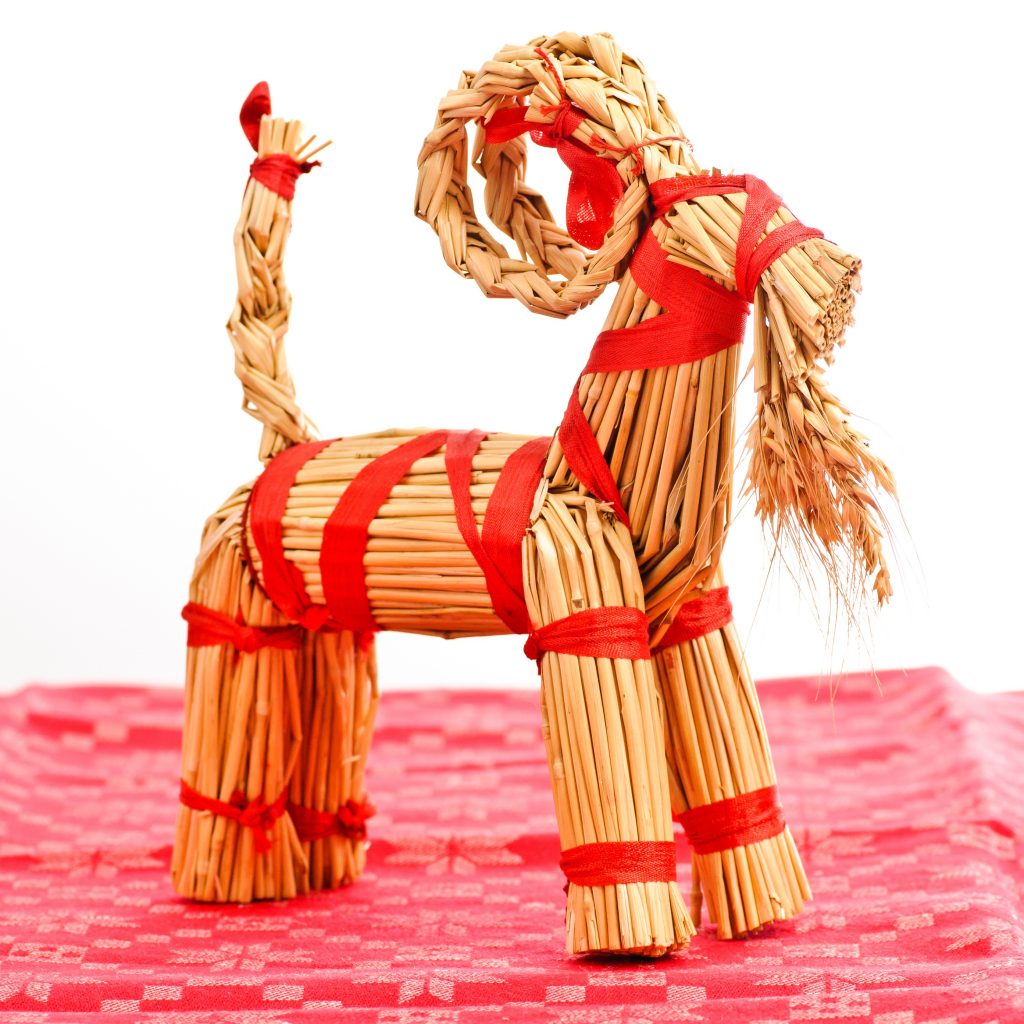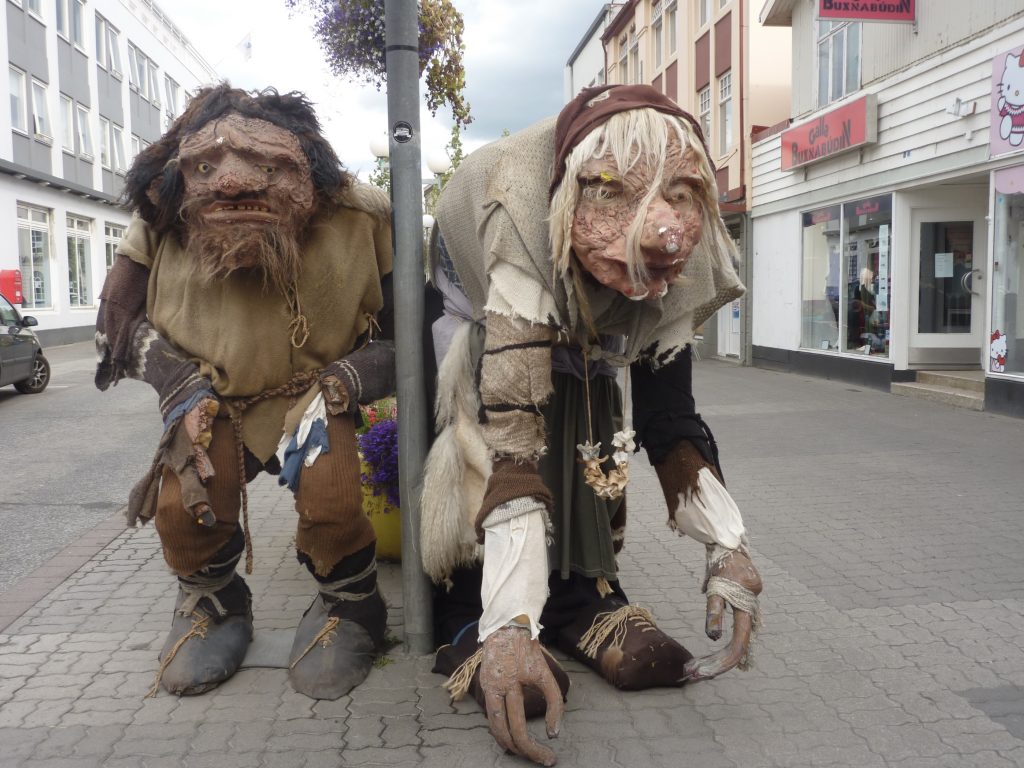People start thinking about Christmas earlier and earlier every year. I noticed this year that shops started to put Christmas gift boxes out at the same time they were selling Halloween decorations. The Christmas adverts have snuck onto the TV already as I write this at the start of November, and songs are already being played in shops. Christmas is unavoidable. For some it’s an event to mark, for others it’s something to avoid. Whether you like Christmas or not, we think you’ll find our top 5 strange Christmas traditions from around the world an interesting read.
 Yule Goat. Photo by: phrej/Adobe Stock
Yule Goat. Photo by: phrej/Adobe Stock
Gävle Goat, Sweden
Making Yule Goats is an ancient tradition in Nordic countries. Since 1966, a 13-metre tall straw goat has been built and put in Gävle’s Castle Square. The idea first came about to help attract custom to local shops. It’s even made the Guinness World Book of Records for being the tallest of its kind, first making records in 1985. The poor goat has suffered numerous attacks over the years, from theft, to arson. Not only is the goat traditional, but attempts to bring it down seem to have become so, too.
Legend of the Christmas Spider, Ukraine
A local tale tells of a poor family who managed to nurture a tree that took root when a pine cone fell from their fireplace. Excited that they would have a Christmas tree, they carefully looked after it. However, as time passed, and Christmas Eve was upon them, they had no money to decorate it. They awoke on Christmas morning to discover the tree covered in a spider web. When the sun rose and shone through the windows, the light cast upon the web made it shine and glitter so no decoration was needed. It’s now a tradition to place a spider web upon Christmas trees. If you find one naturally on your tree, it’s said to be a sign of good luck. The tale is also thought to have inspired the creation of tinsel, meant to represent the web.
 Parents of the Yule Lads from Iceland; Leppalúði and Grýla. Photo by: Jacky Jeannet/Adobe Stock
Parents of the Yule Lads from Iceland; Leppalúði and Grýla. Photo by: Jacky Jeannet/Adobe Stock
Yule Lads, Iceland
Known in Iceland as jólasveinarnir or jólasveinar, this is a group of 13 troll brothers from Icelandic folklore. Their descriptions vary between regions, from being pranksters, to children-eating monsters. What they all agree on though, is that the group descends at Christmas time to cause trouble. In time with the 13 days of Christmas, each troll visits towns when it’s their turn to cause their unique mischief. The threat of being targeted by pranks is said to have discouraged bad behaviour from children in the run-up to the big day. Children are encouraged to leave a shoe out for the trolls; if they’ve been on good behaviour then they’ll receive a small gift inside the shoe. Any bad behaviour will result in a potato. Each troll has been assigned a name based on the pranks they pull, such as Door Slammer, Sausage Stealer and Pot Scraper.
Night of the Radishes, Mexico
Farmers in Oaxaca started this event on December 23rd to help draw attention from visitors to the Christmas market. Oversized radishes are carved to create scenes for this now annual competition to win prizes. The first official competition was held in 1897 and it draws over 100 contestants and thousands of visitors to view their creations.
 The Krampus. Photo by: stinerl/Adobe Stock
The Krampus. Photo by: stinerl/Adobe Stock
Krampus, Austria
While Saint Nick gives out presents to children for good behaviour, the Krampus is his evil counterpart, punishing bad behaviour. He is typically represented as being covered in black or brown fur, with the horns of a goat, fangs and a lolling tongue. Krampuslauf (Krampus run) takes place every year at the start of December throughout Austrian towns. Townspeople dress up like the Krampus and run through the streets, scaring others. Krampusnacht (Krampus night) is on December 5th, and is said to mark the time when the Krampus takes to the streets, looking for bad-behaved children. The Munich Christmas Market hosts one such run, where around 300 people dress up and race around the market.
Celebrating strange Christmas traditions
Although the traditions above might sound strange, they all come from a good place; whether it’s encouraging positive behaviour in children (even if it means scaring them), encouraging support for local businesses or believing in good luck.
Do you have any traditions of your own that might seem strange but you find yourself doing it every year? Perhaps you’ve visited a country and discovered a weird fact about Christmas? Let us know in the comments below.
Written by Jessica Juby.
Make sure you follow us on Twitter and Facebook for the latest travel tips and news.





